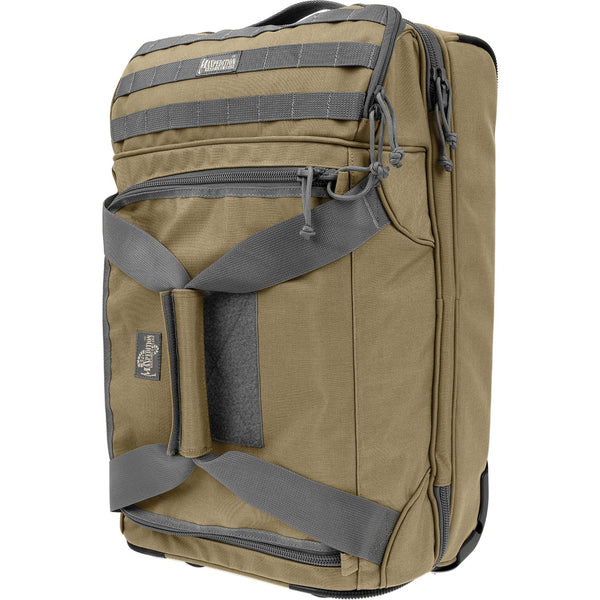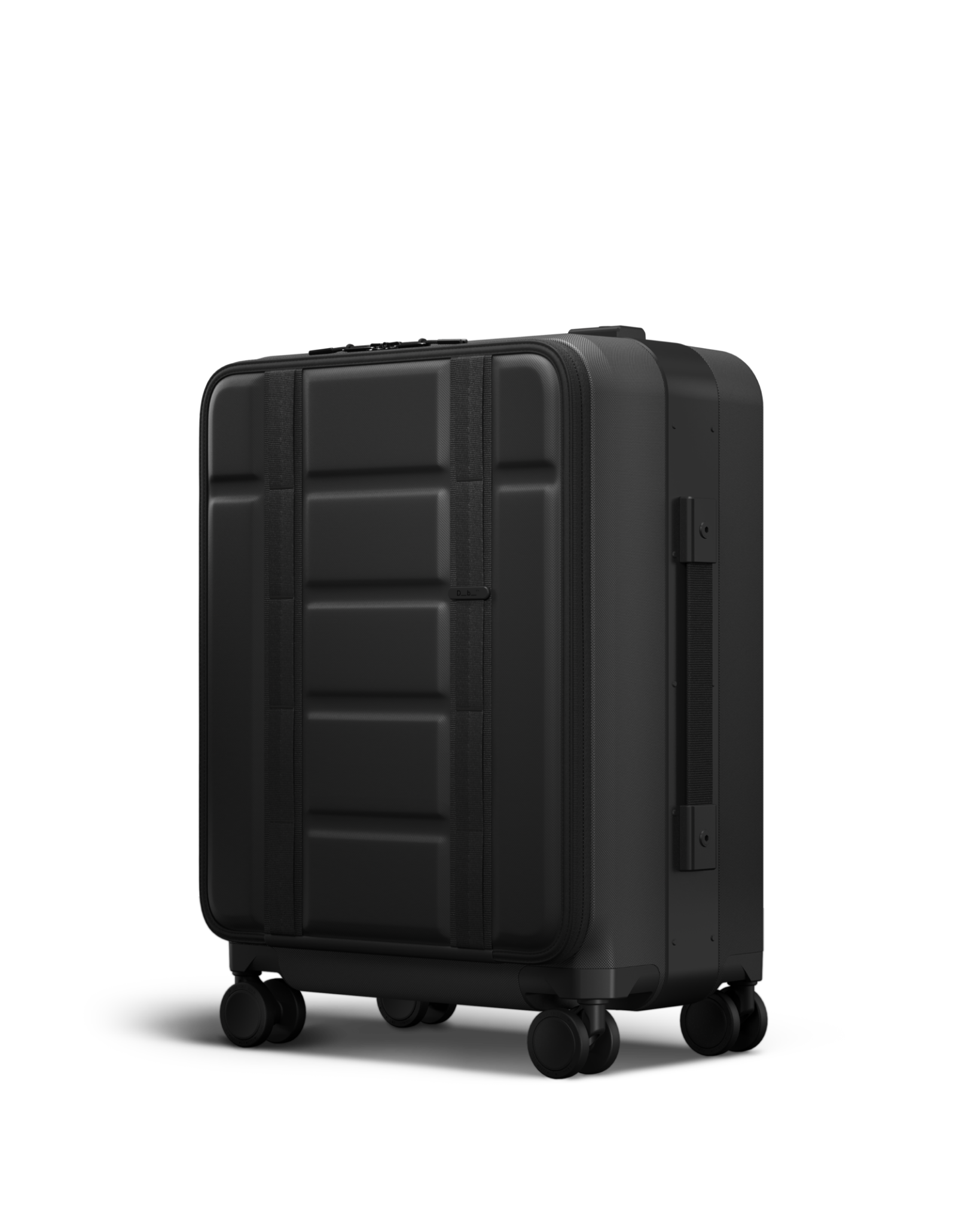The Ultimate Guide to Choosing Your Perfect Carry-On Travel Bag
Embarking on a journey, whether for a quick weekend getaway or an extended international adventure, begins with one crucial decision: selecting the right carry-on travel bag. This seemingly simple choice can significantly impact your travel experience, determining your ease of movement through airports, the security of your belongings, and your overall comfort. Forget the hassle of checked baggage fees and lost luggage; mastering the art of the carry-on travel bag is your first step towards seamless travel. This comprehensive guide delves deep into the intricacies of choosing the ideal companion for your travels, exploring every facet from size and material to essential features and top recommendations tailored to diverse needs.
Understanding Carry-On Luggage Regulations: Navigating the Maze
Before even considering specific features, a fundamental understanding of airline carry-on luggage size and weight restrictions is paramount. These regulations can vary significantly between airlines, and even within the same airline depending on the fare class or aircraft type. Failing to adhere to these guidelines can result in the unwelcome surprise of having to check your bag at the gate, often incurring additional fees and delays. Therefore, meticulous research into the specific airline’s policies for each leg of your journey is non-negotiable.
Size Matters: Most major airlines have maximum linear dimensions (length + width + height) for carry-on bags, typically falling around 45 linear inches (approximately 22 x 14 x 9 inches). However, budget airlines often have stricter limits. Always double-check the exact measurements provided by your airline.
Weight Restrictions: While not as universally enforced as size limits, some airlines, particularly international carriers and budget options, impose weight restrictions on carry-on bags, often ranging from 15 to 22 pounds (7 to 10 kilograms). Be mindful of this, especially if you tend to pack heavy.
Personal Items: In addition to your main carry-on bag, most airlines allow a smaller personal item, such as a laptop bag, purse, or small backpack. Familiarize yourself with the size and type restrictions for personal items as well, as these can be invaluable for carrying essentials and maximizing your carry-on allowance.
Ignoring these regulations can lead to unnecessary stress and expense. By understanding and adhering to the specific requirements of your chosen airlines, you can ensure a smoother and more cost-effective travel experience.
Decoding Materials: Durability and Design in Your Travel Bag
The material of your carry-on travel bag plays a crucial role in its durability, weight, water resistance, and overall aesthetic. Different materials offer distinct advantages and disadvantages, and the best choice for you will depend on your travel style and priorities.
Polyester and Nylon: These synthetic fabrics are popular choices for their lightweight nature, durability, and water resistance. Nylon tends to be more abrasion-resistant than polyester, making it suitable for more rugged use. Look for higher denier ratings (e.g., 600D, 1000D) for increased durability.
Polycarbonate and ABS: These hard-shell materials offer excellent protection for fragile contents and are highly water-resistant. Polycarbonate is generally lighter and more flexible than ABS, making it more resistant to cracking under pressure. Hard-shell bags are ideal for those who prioritize the safety of their belongings.
Canvas and Leather: These classic materials offer a stylish and often more durable option. Canvas is typically treated for water resistance, while leather, although heavier and often more expensive, develops a unique patina over time and offers exceptional longevity. These materials are often favored for weekender bags and duffels.
Consider the type of travel you undertake most frequently when choosing the material of your travel bag. For frequent flyers navigating bustling airports, durability and lightweight design are key. For those prioritizing style and shorter trips, canvas or leather options might be more appealing.
Essential Features to Look For in a Top-Tier Carry-On Bag
Beyond size and material, a well-designed carry-on bag will boast a range of features that enhance its functionality and your travel experience. Consider the following essential elements when making your selection:
Sturdy Wheels and Telescoping Handle: For rolling suitcases, smooth-rolling, multi-directional spinner wheels and a robust, adjustable telescoping handle are crucial for effortless navigation through airports and train stations. Look for handles with minimal wobble and wheels that can withstand various surfaces.
Comfortable Handles and Straps: For duffel bags and backpacks, comfortable and well-padded carrying handles and shoulder straps are essential, especially when the bag is fully packed. Adjustable and stowable backpack straps offer versatility.
Smart Internal Organization: A well-organized interior can make all the difference in maximizing space and keeping your belongings easily accessible. Look for features such as zippered compartments, compression straps, padded laptop sleeves, and mesh pockets.
External Pockets: Quick-access external pockets are invaluable for storing items you need readily available, such as water bottles, travel documents, and electronics.
Durable Zippers: High-quality, self-repairing zippers are a must to prevent frustrating breakdowns during your travels. Look for sturdy zippers with smooth operation.
Expansion Capabilities: Some carry-on bags offer an expandable section, providing extra packing space when needed and the option to compress the bag when carrying less.
TSA-Approved Locks: For added security, consider a bag with a built-in TSA-approved lock, allowing security personnel to inspect your luggage without damaging it.
Water Resistance: Depending on your destination and travel style, water-resistant materials and zippers can offer valuable protection for your belongings.
Carefully evaluate which of these features are most important to your individual travel needs and preferences. A well-equipped carry-on bag can significantly streamline your journey and reduce travel-related stress.
Types of Carry-On Travel Bags: Finding Your Perfect Fit
The world of carry-on travel bags is diverse, with various styles designed to cater to different travel preferences and needs. Understanding the different types available will help you narrow down your options:
Rolling Suitcases: These are the most traditional type of carry-on luggage, featuring wheels and a telescoping handle for easy maneuverability. They are ideal for travelers who prefer not to carry weight on their shoulders and are often favored for business trips and longer vacations.
Travel Backpacks: Designed specifically for travel, these backpacks often feature a suitcase-style opening for easy packing, multiple compartments for organization, and comfortable, stowable shoulder straps. They are a great option for travelers who prioritize hands-free movement and navigating uneven terrain.
Duffel Bags: Versatile and often spacious, duffel bags are a popular choice for shorter trips and those who prefer a more flexible packing style. They typically feature top carry handles and often include a shoulder strap.
Weekender Bags: Smaller and more stylish than traditional duffel bags, weekender bags are perfect for short getaways. They often feature a single main compartment and are designed to hold just the essentials.
Hybrid Bags: These bags combine features of different styles, such as a rolling suitcase with backpack straps or a duffel bag with wheels. They offer versatility for different travel situations.
Consider the length and style of your typical trips, as well as your personal preferences for carrying your luggage, when deciding on the type of carry-on travel bag that best suits you.
Top Considerations When Choosing Your Ideal Carry-On
Selecting the perfect carry-on bag involves a thoughtful assessment of several key factors. Keep the following considerations in mind as you explore your options:
Trip Duration and Packing Style: For shorter trips, a smaller duffel or weekender bag might suffice. Longer trips or those requiring more specialized gear may necessitate a larger rolling suitcase or travel backpack. Consider how efficiently you pack and the types of items you typically bring.
Airline Compatibility: Always prioritize a bag that meets the carry-on size and weight restrictions of the airlines you fly most frequently.
Comfort and Maneuverability: If you anticipate a lot of walking, prioritize comfortable straps or smooth-rolling wheels and a sturdy handle.
Durability and Quality: Invest in a well-made bag from a reputable brand that can withstand the rigors of travel. Check reviews and consider the warranty offered.
Security: If security is a concern, look for features like lockable zippers or built-in TSA locks.
Style and Aesthetics: While functionality is paramount, choose a bag that aligns with your personal style and preferences.
Budget: Carry-on travel bags range in price from budget-friendly options to high-end designer models. Determine your budget and research bags within that range that meet your needs.
By carefully considering these factors, you can make an informed decision and choose a carry-on bag that will be a reliable and valuable travel companion for years to come.
Investing in Your Travel Comfort: The Importance of the Right Carry-On
Ultimately, the right carry-on travel bag is an investment in your travel comfort and convenience. It can alleviate the stress of checked baggage, keep your essentials close at hand, and allow for greater flexibility and efficiency during your journeys. By taking the time to research and carefully consider your needs, you can select a carry-on bag that not only meets airline regulations but also enhances your overall travel experience. Choose wisely, pack efficiently, and embark on your adventures with confidence, knowing you have the perfect companion by your side.





